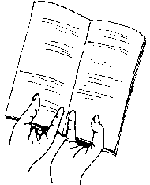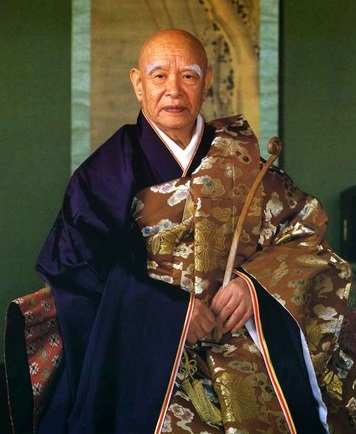My Teacher, Gudo Wafu Nishijima Roshi, died this year, still sitting daily Zazen at age 94. In manner, he was a soft-spoken, gentle, conservative man of his times, born nearly a century ago in Taisho era Japan. In action, he was a perceptive commentator on the current state and future of Zen Buddhism; a critic and outspoken reformer (even if largely ignored by the Buddhist establishment); and a creative and original (if sometimes slightly unorthodox) visionary and philosopher who sought to express Zen and Mahayana Buddhist teachings in unique and helpful ways understandable to people of modern times. I believe that what he stood for will have lasting, positive effects on the future of Soto Zen Buddhism in Japan and the West, and that his many students (not, by any means, all cut of the same cloth) will carry on his legacy. First and foremost, Nishijima cherished Zazen as the fulfillment of reality itself, the proper centerpiece of all Buddhist practice.
Nishijima was a traditional Zen teacher in some ways, yet also someone who foresaw great changes in Buddhist customs as practices encounter new times, places and cultures. While he was aware that the outer wrappings of Buddhist traditions may change, he also knew that Buddhist truth transcends time, place and conditions.
***
In our lineage, the family kitchen, children’s nursery, office or factory where we work diligently and hard, the hospital bed, volunteer activity and town hall are all our monastery and place of training. Although Nishijima taught that each of us can benefit from periods of withdrawal and silence, be it in sesshin or ango, monastic training, or a hermit’s hut in the hills, he also knew that Zen priests and Zen training can come in many fruitful forms. For those of us out in the world, priest training can be found right in the city streets, homes, workplaces and soup kitchens of this modern world, as much as behind monastery walls. The barriers of in and out are forgotten; all walls drop away.
***
Nishijima was thoroughly imbued with the spirit of Dogen, was a translator of Dogen’s complete Shobogenzo into modern Japanese and (with his student Chodo Cross) into English, and felt that Master Dogen had found ways to express the Buddhist teachings rarely heard until the modern day. Nonetheless, despite his profound trust in the teachings of Dogen, I would not describe Nishijima as a prisoner of Dogen. Among the many treasured teachings of Dogen that are timeless and survive the centuries, Nishijima knew that some were primarily the views and expressions of a man living amid the society and superstitions of 13th century Japan, words aimed directly at the needs of monastics pursuing a cloistered life. Those of Dogen’s writings directed primarily to his band of monks at Eihei-ji must be placed side by side with Dogen’s other pronouncements recognizing the possibilities of Zen practice for people in all situations of life. Buddhism, and Dogen’s teachings, can be brought forth and adapted for our situations and times.
Nishijima thought that Zen teachings could best be introduced to a Western audience via finding common ground with Western philosophy, science and modern medicine. Years before it was common to load meditators into MRI machines, Nishijima spoke of the connection of Zazen to the brain and human nervous system, influenced by then cutting-edge research on meditation by Harvard’s Dr. Herbert Benson and others. Nonetheless, some readers may find that several of Nishijima’s ideas and ways of expressing Buddhist teachings were quite personal to him, and his understanding of human physiology as a non-specialist was sometimes a bit simple in description. Even as his student, I wish to say honestly that Nishijima was not a professional philosopher nor a trained scientist. He tried to express from his own heart the sense of balance and clarity encountered in Zazen. For that reason, he frequently spoke in very creative but, perhaps, too simplified ways on Western philosophical concepts, and, as a scientific layman, about what happens in the body and brain. ... But regardless of whether or not he was completely accurate in his description of how the body functions in Zazen, Nishijima stood for and believed in the meeting and fundamental compatibility of Buddhist tenets and scientific method. Such a belief is a breath of fresh air in the often myth- and superstition-bound world of religions, including Buddhism.
***
Perhaps readers will sometimes feel that Nishijima went a bit far with his model of reality. For example, Nishijima Roshi came to advocate a unique, and very personal, interpretation of the ”Four Noble Truths” (contained in this book) as an expression of his views on idealism, materialism and the rest, and some may feel that he stretched things a bit too much. It may be so sometimes. However, the fundamental points he sought to make in doing so—of Zen practice as a way to encounter the sacred in just what is, and Zazen as a means to realize the balanced and whole of this world, which often seems so out of balance and broken into pieces—should not be easily discarded. It is an important teaching.
While never completely free of his own idealism and matters of faith, like all of us, perhaps, Nishijima Roshi nonetheless sought to present Zen practice freed of naive beliefs and superstitions, exaggerated claims and idealized myths masquerading as historical events, all of which can bury and hide the very real power of our Buddhist way in a mass of ignorance and foolishness. I, and many of his other students, join him in that task. In such ways, Gudo Wafu Nishijima helped change Zen Buddhism and continues to do so. His legacy lives on in his many students around the world and his teachings will further enrich and transform our tradition into the future.








 Reply With Quote
Reply With Quote











 limited to positive 優婆塞 台 婆
limited to positive 優婆塞 台 婆
 )
)